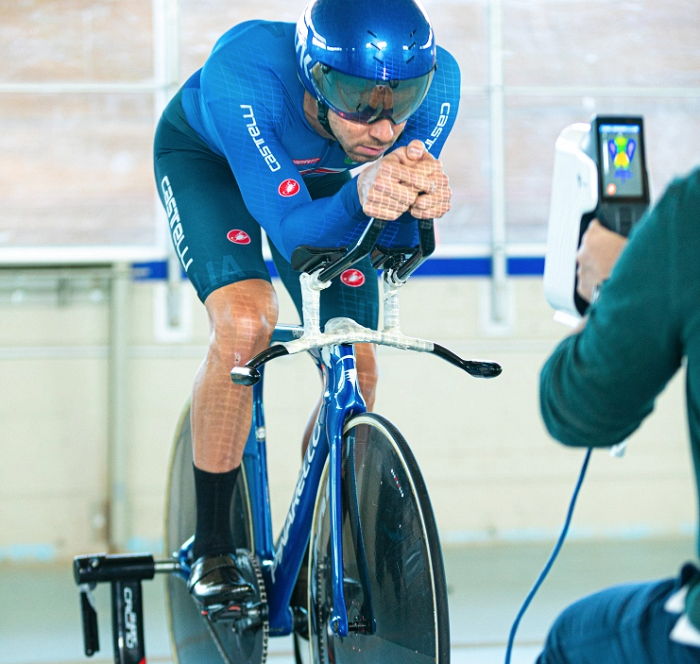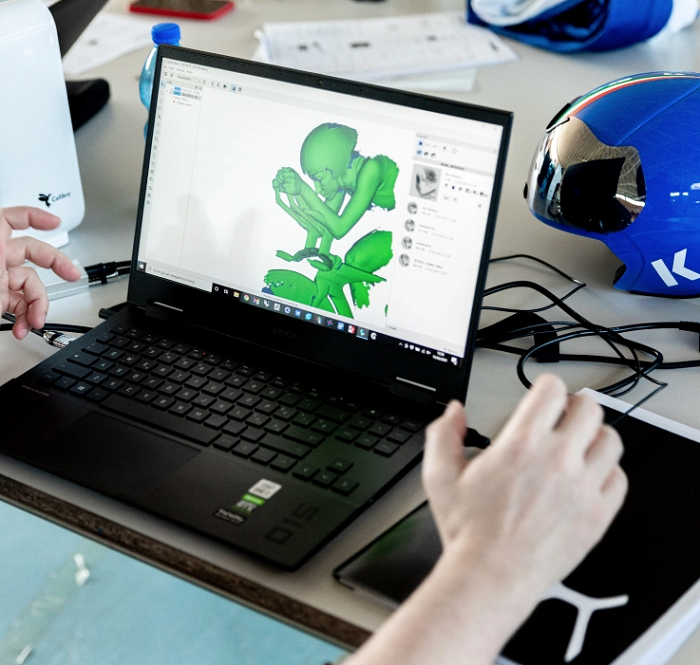The Italian national cycling team is going for the gold at this week’s Tokyo 2020 Olympics, and in order to improve their aerodynamic efficiency for competition, the athletes were all 3D scanned, using the Calibry scanner, by 3DiTALY, the Italian partner of Thor3D. The results of these aerodynamic studies were recently outlined in a case study by the scanning company.
I’m not what you’d call a big sports fan, but that changes when it’s time for the Olympics—when I’m watching Team USA compete in gymnastics, swimming, beach volleyball, and other events, I yell at the TV louder than my husband does when he watches football. There are numerous examples of 3D technologies being used to help Olympic hopefuls win gold medals, and even earlier this month we heard about a custom 3D printed grip made for a French pistol shooter, and 3D printed bicycle components created for a member of Great Britain’s cycling team. These last two examples were for the Summer Olympic Games taking place right now in Japan, after being postponed last year due to the COVID-19 pandemic.
In terms of cycling, good aerodynamics are critically important to help athletes keep performing at top speeds. The goal of this case study was to capture the most aerodynamic position while a cyclist is decked out in full gear, and then take those measurements and give them to engineers from bike manufacturer Pinarello so they can fabricate custom handlebars.
Italian companies HardSkin and Pinarello, the latter of which is very familiar with 3D printing, supply the Italian national team with all of their cycling equipment; Hardskin is in charge of the sportswear, while Pinarello takes care of the bicycles. The two partnered up to figure out how to improve the team’s aerodynamic efficiency in time for the Tokyo Olympics.
Hardskin asked 3DiTALY to digitize both the Pinarello bicycles and the cyclists themselves, and the scanning process took place earlier this year at the Velodrome of Montichiari in Brescia—Italy’s first and only indoor facility fully dedicated to track cycling.
Because a 3D model file has all of the information required to analyze an athlete’s position, 3D scanning was chosen for the project, as the technology is a convenient and fast way to capture data. Fast is certainly right, as, according to the Thor3D case study, it only took 3DiTALY two minutes to make a series of accurate, high-resolution models using the Calibry 3D scanner.
Using the Calibry, the 3D body scanning first captured the athlete’s warm-up routine and preparation of “the mechanical medium,” followed by an imitation of an actual bike race in order to determine the most aerodynamic position for the cyclist. Finally, wearing a bodysuit and helmet to simulate the race, the athlete maintained race position on the bike while being scanned.
Calibry Nest software was then used to post-process all of the scan data, which was sent to engineers from Pinarello for the aerodynamic studies. Then, in time for this week’s Olympic Games, the bike manufacturer tailor-made a unique handlebar for the cycle, which fits the athlete’s arms perfectly.
(Source/Images: Thor3D)
Subscribe to Our Email Newsletter
Stay up-to-date on all the latest news from the 3D printing industry and receive information and offers from third party vendors.
You May Also Like
Further Understanding of 3D Printing Design at ADDITIV Design World
ADDITIV is back once again! This time, the virtual platform for additive manufacturing will be holding the first-ever edition of ADDITIV Design World on May 23rd from 9:00 AM –...
3D Printer Maker EVO-tech Reborn as NEVO3D — Once More With Feeling
EVO-tech was a 3D printing service and original equipment manufacturer established in 2013 and based in Schörfling am Attersee, Austria. The company produced high-quality material extrusion systems featuring linear bearings,...
3D Systems Brings 3D Printed PEEK Cranial Implant to the U.S. with FDA Clearance
For more than 10 years, 3D Systems (NYSE:DDD) has worked hand-in-hand with surgeons to plan over 150,000 patient-specific cases, and develop more than two million instruments and implants from its...
CDFAM Returns to Berlin for Second Annual Symposium
The second CDFAM Computational Design Symposium is scheduled for May 7-8, 2024, in Berlin, and will convene leading experts in computational design across all scales. Building upon the first event...



































